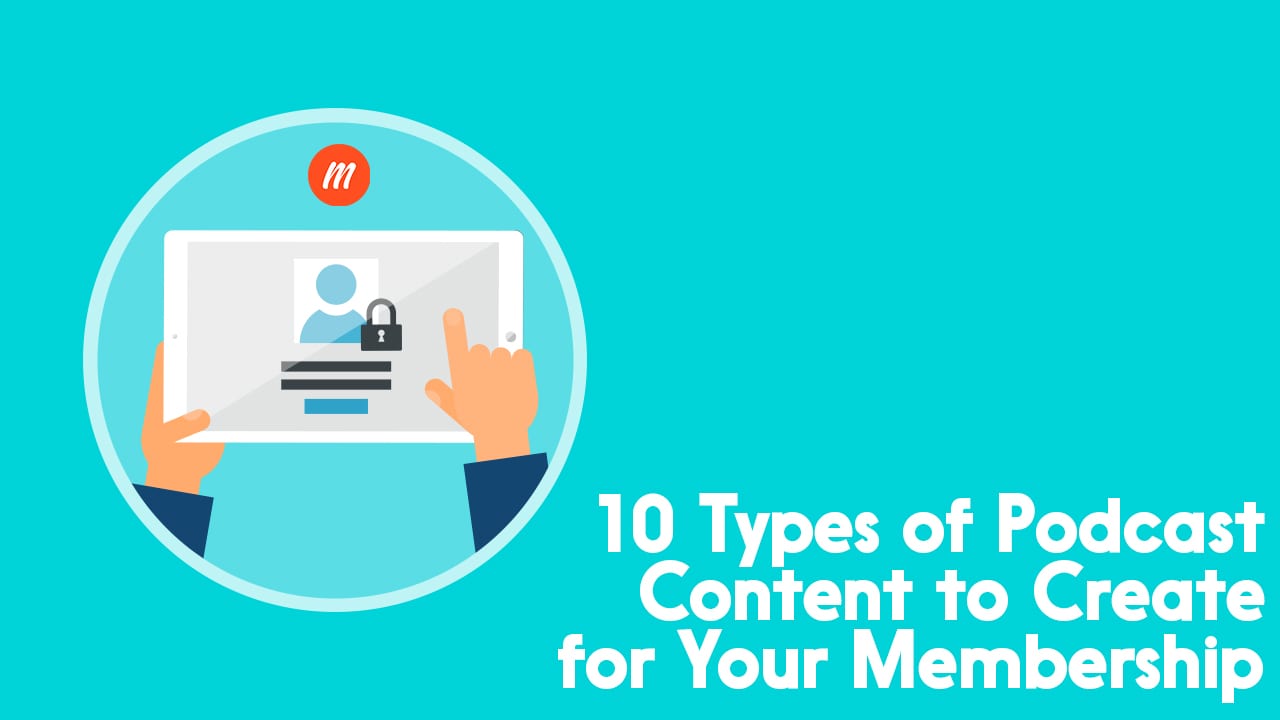10 Types of Podcast content to create for your Membership

This is a sponsored post from Memberful – a platform that makes it simple to sell memberships and private podcasts to your audience.
Members-only podcasts are becoming increasingly popular these days.
This type of private or exclusive content can be used in loads of different ways. For example, an existing podcast can have a supplementary members-only show where fans can subscribe to get premium content. Or, an organisation can create a podcast like this to communicate with its team members.
If you run a membership site or community, then you might fancy creating a podcast for those members too. There are a few options out there when it comes to setting that up. One such option is Memberful, an all-rounder membership platform that allows you to run a private podcast alongside premium written, video, and community content.
Speaking of content, that’s the most important factor for any podcast. As always, it should be our starting point.
Creating Content for Your Members-Only Podcast
So what types of episodes can you create for your members-only podcast? Here are some ideas, tips, and suggestions. You can pick one, combine a few, or do them all. It’s entirely up to you.
1. Bonus Content
A textbook example of bonus content is if you run an interview podcast as your main show. Your hardcore fans can sign up to be subscribers of a members-only podcast which gives them more content. The good news is, this doesn’t need to mean a lot more work for you, either.
Let’s say your average interview runs about 45mins. You could chat to your guest for another 15-30mins (so long as they’re happy to do so) and release it as extended content on the members feed.
2. Behind the Scenes
Maybe you have an audience built around your main podcast or some sort of other online content. It’s likely you’ll want to keep your main content as on-topic and focused as possible. But some fans who’ve been following you for a while will naturally want to hear a little more from you.
Having a members-only podcast means you can do a bit of fun “behind the scenes” stuff. This type of laid-back and off-topic content might annoy new folks who find your main episodes. But many long-time listeners will love it.
3. Ad-Free Content
If you run sponsorship or advertising on your podcast, you can use your members-only alternative to publish the same content, ad-free.
This can be a decent incentive for long-time listeners to sign up. If someone’s heard your ads so much that they’re burned into their brain, they’d likely jump at the chance to subscribe to a 100% content-focused version.
That said, you’d want to combine your ad-free private content with some of the other strategies mentioned here. If this was your only selling point, you’re basically announcing “hey everyone, my ads are annoying!”.
The more value you can add, the more successful your members-only podcast is going to be.
4. Individualised Q&A
This is handy if you create content that’s designed around teaching something. Or, helping people to do something.
You might get a lot of questions in your inbox or on social media. It can be hard to keep on top of them all. But it can also be tough to feel like you’re ignoring your listeners.
With a members-only podcast, this becomes an opportunity to create valuable new content. You can answer all the questions you get on there, and ask members to get in touch with anything they’re struggling with. You might even ask them to send their questions in voice format, which can really enhance the episodes and draw in more engagement.

5. Repurposing Your IP
This is a strategy that might work well for someone who’s written a book. They could record the book as an audio version, and release it as a members-only podcast.
Alternatively, say you’ve created a course for that’s for sale, or is available inside your membership site. You could repurpose that as a podcast and release it this way.
Basically, anything you’ve created that you don’t want to give away as free public content, could be published as an upgrade in the form of a private podcast.
6. Repurposing Your Back Catalogue
Got a few hundred episodes under your belt? Why not keep a certain amount – say, 50 or so – live on your public feed, and move the rest into a members-only podcast?
That way, you can still pull in new listeners by creating great free content. But there’s an upgrade available if they want to dive in and binge everything you’ve ever released.
7. Project-Based Podcasting
Whether you’re a big company with thousands of staff, or a small group of pals working on a fun project together, a podcast can work well for you.
An increasing number of businesses are using private podcasts to communicate with staff, deliver training and onboarding, keep everyone up to date, and build a bit up a bit of engagement.
In an era where people are relying more on remote working, a podcast is a great substitute for the constant need to get everyone together on a call. Especially when there are different timezones involved.
8. Member Quick Wins
Let’s say your main podcast episodes are pretty long form. In-depth conversations that go deep on a topic, and tend to last for an hour or more.
But you may feel there’s scope to do short, sharp, “quick win” style content too. Maybe you discovered a new tool that’s saved you hours. Or, you’ve been trying out a new productivity technique that’s been working well for you.
With “quick win” content, you can record a short no-fluff episode that focuses entirely on that one thing. You can even set your listeners a “task of the week”.
However, if you suddenly started dropping little 4-5min episodes in your main feed, your audience might get confused, or even annoyed.
Making this content part of your members-only podcast avoids that happening. And it’s a great reason for listeners to sign up and subscribe, too.
9. Community Content
You can drive engagement with your members-only podcast by creating community content.
Here, you might ask members to teach something of their expertise. Or, share a case study. This gives them a platform to shine, and teaches the rest of the community something useful. On top of that, it builds community spirit when people get to know other members. Some might even start collaborating on their own projects together. When this happens, these members will always remember where and how they met.
10. Industry News or Commentary
Many podcasters like to keep the content on their feeds evergreen. If someone is bingeing through a back catalogue and has to listen to a lengthy chat about a now irrelevant issue from 2011, it can be a big turnoff.
But no matter what niche or industry you create content around, there are always things that pop up that you feel you should share, or comment on.
You can do this in a short regular segment towards the end of your main episodes. Or, you could move it all to a members-only podcast.
Many of your listeners would no doubt be interested in signing up to stay up-to-date and getting your take on things. This can also help keep your main content fresh, useful, and relevant for years to come.
Next Steps for Creating a Members-Only Podcast
If you’re won over to the idea of creating a members-only podcast, the next stage is to set it up and get started.
There are a few options on the market these days for creating a private podcast feed. You can see another guide to private podcasting that Colin wrote around creating an internal company show, here. However, Memberful really stands out as a complete all-rounder of members-only content.
It integrates with most of the existing content-creation tools on the market. You can connect it to your WordPress site, an email list provider like Mailchimp or Convertkit, a community forum, and your podcast media host.
Memberful enables you to create members-only content on all of these platforms and more. This means your private podcast is in the capable hands of a dedicated media host, and you have the added benefits of being able to create written, video, and community content behind your paywall too. And on the subject of paywalls, Memberful also integrates with Stripe, so the money side of things is all easily managed.
The degree to which you’re able to fully “lock down” your content will depend on your media host. One of our favourite options on the market is transistor.fm, and they look to be the best pick on Memberful’s list of compatible services.
If it’s purely a podcast you’re looking to create as premium content, you can simply opt to work directly with a hosting provider. But if you want to expand your members-only offerings in any way, shape, or form, then be sure to give Memberful a look!
We hope that this has been a useful guide, as you draw up plans to create your members-only podcast. We’d also like to thank Memberful for sponsoring this content, and would encourage you to go check them out!
